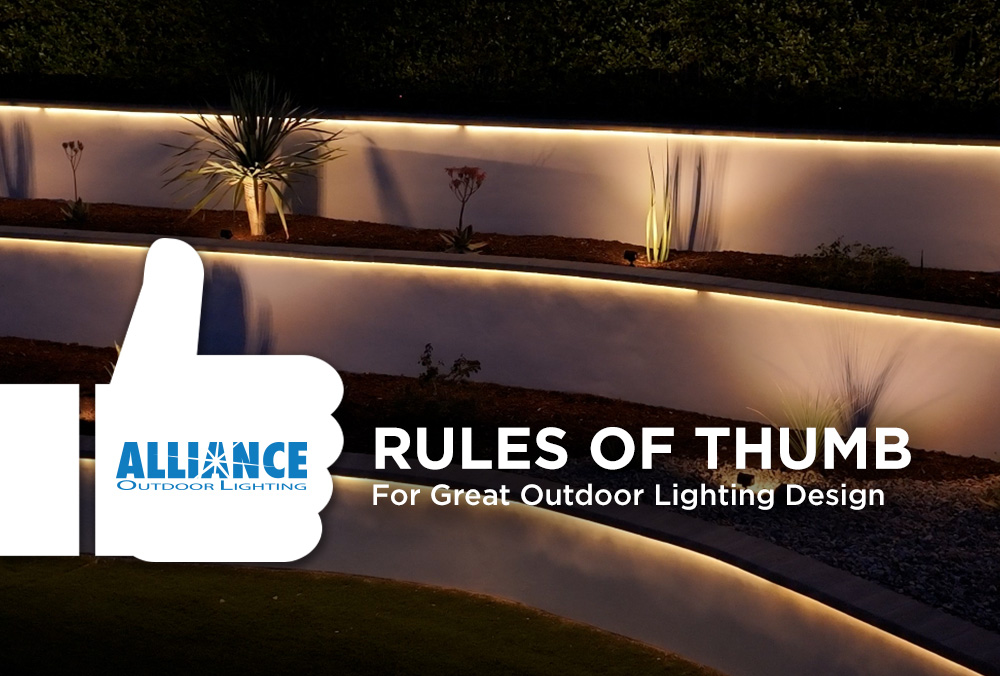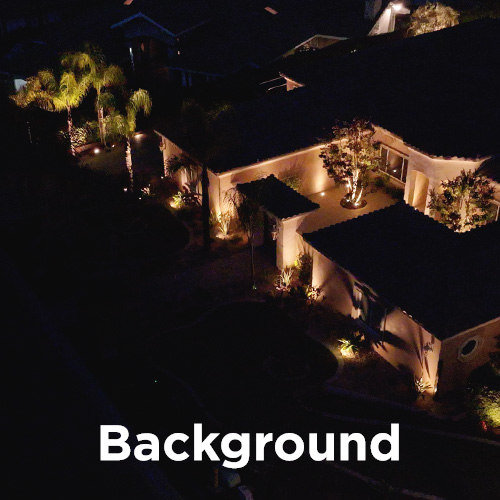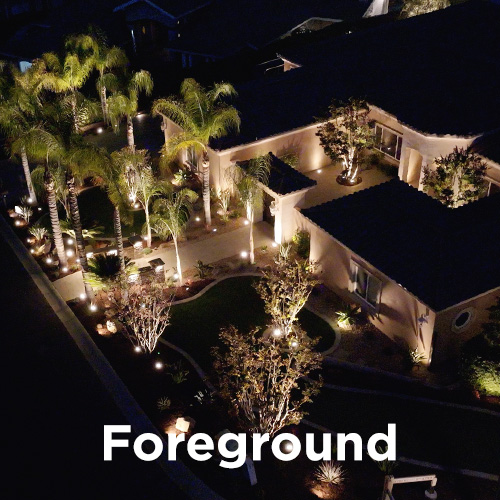
built for contractors, Backed by alliance
When it comes to outdoor lighting, the best designs don’t just light up a property—they sell the whole job. Whether you’re a distributor training new contractors or a sales rep offering layout advice, these tried-and-true principles will help deliver better installs and happier customers.
Below are our go-to rules of thumb for lighting that’s practical, clean, and effective.
Start with the Three Pillars

Every great lighting layout solves three things:
SAFETY
Can people safely move through the space at night?
SECURITY
Are there dark corners, blind spots, or places where someone could hide?
AESTHETICS
Does the lighting make the property *look* better?
When a contractor designs with all three in mind, the results speak for themselves—and so does the referral business.
Design by Zones, Not Fixtures
Don’t sell lights—solve layout problems. Start by breaking the property into *zones*:
- Driveways and walkways
- Entry points
- Beds and borders
- Patios and gathering spaces
- Trees, signs, or architectural focal points
Focus on what needs to be lit in each zone. This keeps the design purposeful and makes quoting way easier.
Layer the Foreground, Midground, and Background
Depth sells. Every job should feel complete whether you're standing at the curb or looking out from the kitchen window.



Think in layers:
From the street - The curb is the foreground, the house is the background.
From the home - The patio is the foreground, the yard and fence line become the background.
Lighting all three layers creates symmetry and balance from every angle. Leave a zone dark, and it looks unfinished—and chances are, the homeowner’s calling back asking for more.
Use Effects That Work
There’s a reason classic techniques never go out of style. Use them to add shape, movement, and drama to your installs.
GRAZING
Light skimming across textured surfaces
SILHOUETTING
Backlight a shrub or statue to make it pop
SHADOWING
Create interesting contrast behind objects
WALL WASHING
Light a flat surface evenly without harsh hotspots
Choose the Right Color Temp
Keep it warm unless there’s a reason not to.
2700K Cozy and natural (ideal for most residential installs)
3000K Clean and crisp without feeling too sterile
4000K+ Great for moonlight or certain architectural highlights
Stay consistent throughout a zone, and avoid mixing color temps that make the job feel disjointed.
One Last Reminder...
Customers almost never say, “I wish I had fewer lights.”
But they *will* call back when a corner of the yard gets forgotten.
Design it right the first time—and you’re not just lighting a space.
You’re building trust, referrals, and long-term business
Need help training contractors or quoting lighting design? Alliance reps are here for you—with jobsite support, demo kits, and design tools to keep your branch one step ahead.

 Use this form to sign up for our newsletter. If you need technical support, please contact our
Use this form to sign up for our newsletter. If you need technical support, please contact our